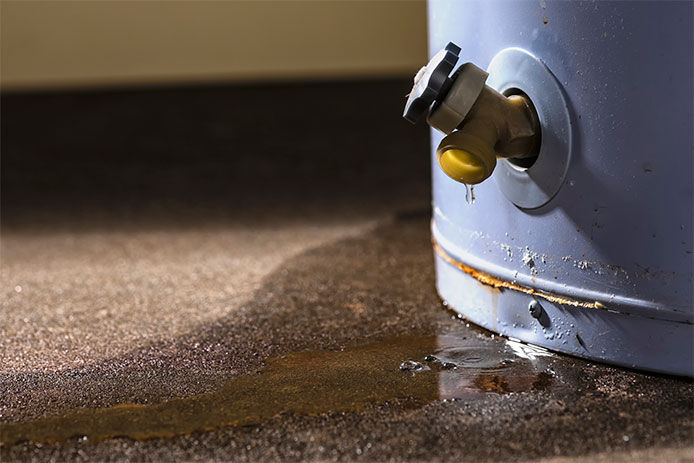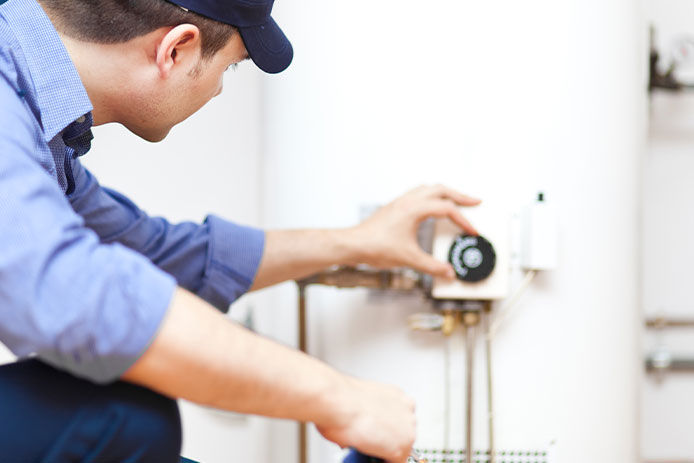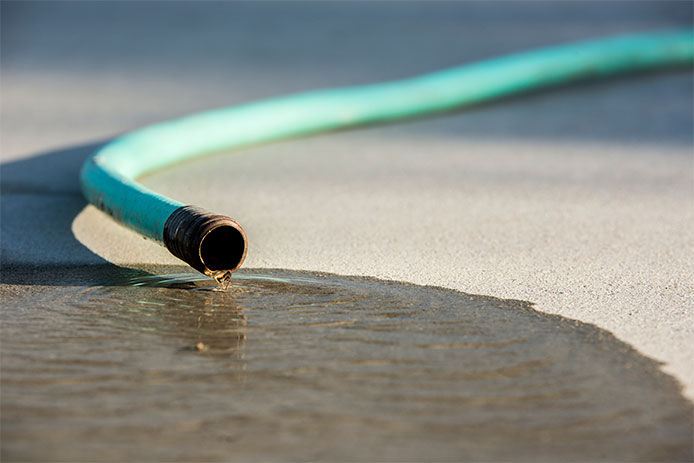Annual Water Heater Cleaning & Maintenance

You might think of your water heater as an appliance you can’t maintain yourself, but that’s slightly inaccurate. While most repairs should be handled by a plumber or HVAC technician, most homeowners can tackle a set of annual maintenance tasks on their own. Don’t be afraid to get familiar with how your water heater works. As long as you follow the proper safety procedures and limit what you do, you can safely handle many basic tasks before calling for professional servicing. These routine cleaning tasks will significantly extend the lifespan of the water heater and improve its efficiency.
Check for Leaks

The easiest maintenance task to keep your water heater running smoothly is to simply look at it. Check underneath and around it for any signs of leaks, including white marks left by dissolved minerals. Puddled water indicates there’s an issue with the water heater that deserves a professional’s attention. If everything looks dry, make sure to sweep and dust around the appliance. That makes it easier to see when there’s a problem and prevents overheating.
Adjust the Temperature

Next, find the temperature dial for the water heater. This is easier on a gas water heater because it’s on the regulator connecting the gas line. You’ll need to cut power to the unit on electric models before adjusting the temperature control where the wiring connects. Either way, keep the thermostat above 120 degrees F to prevent Legionnaire’s Disease. Stay below 140 degrees F to avoid scalding. Families with young children should stay near the 120-degree mark for the safest bathing experience for sensitive skin.
Drain and Flush the Tank

The single best way to extend the water heater’s lifespan is to clean it at least once a year. This involves a process known as flushing the water heater. Start by finding the thermostat from the previous step and switching it off. Then disconnect the power to an electric model or turn the shut-off valve on a gas model. Turn off the water supply to the water heater next. Then run a faucet elsewhere in the house just on the hot tap. When it sputters out, leave the tap open and return to the water heater.
Find the drainage spigot at the bottom of the water heater. Attach a standard garden hose to it and run the hose out of your home or into a large bucket. Twist the valve until water runs out of the hose. Drain until there’s no more sediment coming out of the drain, if not all the water in the tank. Then turn on the cold water supply again. This sends fresh water through the tank, flushing it. Continue this step until no more sediment leaves the tank, only clean water. Then shut off the cold water supply, then the drainage valve. Finally, close the tap you have open elsewhere in the house.
Reconnect electrical wiring or turn the shut-off valve on a gas water heater. Relight the pilot light on a gas water heater as well. Turn the cold water supply back on the tank and listen to it fill. Then switch the thermostat back to the desired temperature. Finally, test a hot water tap about an hour later to make sure it’s heating properly.
Test the Valve

In addition to the drainage valve used for flushing the water heater, there should be a safety feature known as a pressure relief valve. It can easily corrode or rust and become stuck shut or open. Designed to release water and pressure to prevent explosions, it’s essential to replace it if damaged. It should have a brightly colored lever handle you can lift and lower to test it. Watch for hot water to drip from the pipe attached to it. If it won’t lift or no water leaks out during this test, have it replaced as soon as possible.
What to Get Done Professionally

The sacrificial anode inside the tank should be inspected annually and replaced every five years or so. However, most modern water heaters make it tricky to open the tank enough to see it, much less replace it yourself. So leave that step to the professionals, along with testing of the gas lines or repairs to electrical wiring.
With one annual flush per year and a quick check every quarter, a water heater is a safe and reliable appliance that will last for over a decade. However, don’t expect perfect performance and low energy bills unless you’re willing to put in the work to maintain your appliances. Even the best new equipment can lose efficiency after sediment builds up.
While do-it-yourself projects can be fun and fulfilling, there is always a potential for personal injury or property damage. We strongly suggest that any project beyond your abilities be left to licensed professionals such as electricians, plumbers, and carpenters. Any action you take upon the information on this website is strictly at your own risk, and we assume no responsibility or liability for the contents of this article.